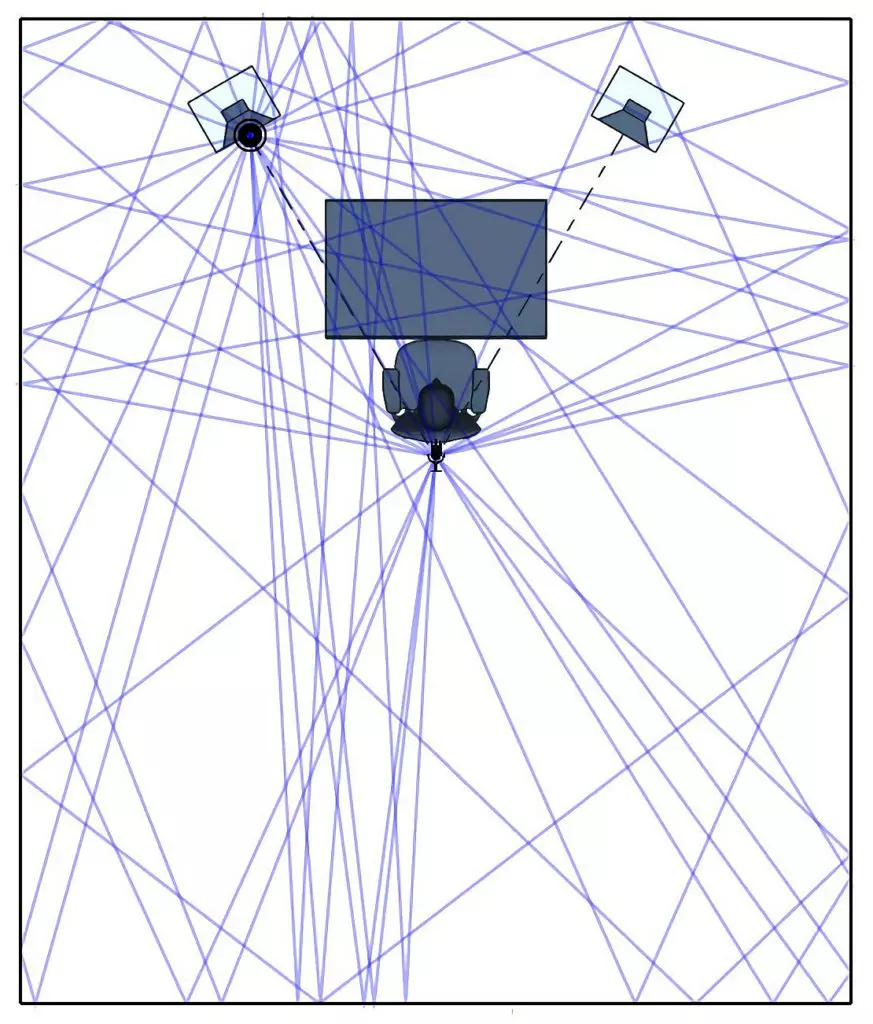반사
소리의 반사 현상은 소리 파동이 특정 표면에 부딪혀 돌아오는 현상을 말합니다. 이는 소리 파동이 장애물이나 벽 등을 만나면 일어나며, 반사된 소리는 듣는 사람에게 원래 소리와 함께 도달합니다. 이러한 반사 현상은 음향의 반향이나 공간의 특성을 이해하는 데 중요한 역할을 합니다.
소리의 반사는 “입사각과 반사각이 같다”는 법칙을 따릅니다. 때로는 반사의 법칙이라고도 합니다. 빛과 다른 파동, 그리고 당구공이 탁자의 뱅크에서 튀는 것과 같은 현상에서도 동일한 행동이 관찰됩니다. 반사된 파동은 입사된 파동과 간섭하여, 건설적 및 파괴적 간섭의 패턴을 생성할 수 있습니다. 이는 방안에서 스탠딩 웨이브라고 불리는 공명을 유발할 수 있습니다. 이는 단단한 표면 근처의 소리 강도가 증가한다는 것을 의미합니다. 왜냐하면 반사된 파동이 입사된 파동에 추가되어 표면 근처의 얇은 “Pressure Zone”에서 압력 진폭이 두 배로 증가하기 때문입니다. 이는 PZM 마이크에서 감도를 높이는 데 사용됩니다. 압력이 두 배로 증가하면 마이크로폰이 수음하는 신호가 6dB이 증가합니다. 스트링 진동 현상과 관 공명 현상에서의 반사는 해당 시스템에서 공명 스탠딩 웨이브를 생성하는 데 중요합니다.
Reflection
The phenomenon of sound reflection refers to the occurrence where sound waves hit a specific surface and bounce back. This happens when sound waves encounter obstacles or walls, and the reflected sound reaches the listener along with the original sound. This reflection phenomenon plays a crucial role in understanding the reverberation of sound and the characteristics of a space.
The reflection of sound follows the law “angle of incidence equals angle of reflection”, sometimes called the law of reflection. The same behavior is observed with light and other waves, and by the bounce of a billiard ball off the bank of a table. The reflected waves can interfere with incident waves, producing patterns of constructive and destructive interference. This can lead to resonances called standing waves in rooms. It also means that the sound intensity near a hard surface is enhanced because the reflected wave adds to the incident wave, giving a pressure amplitude that is twice as great in a thin “pressure zone” near the surface. This is used in pressure zone microphones to increase sensitivity. The doubling of pressure gives a 6 decibel increase in the signal picked up by the microphone. Reflection of waves in strings and air columns are essential to the production of resonant standing waves in those systems.
관련된 음향효과
[공지]회원 가입 방법
[공지]글 작성 및 수정 방법


